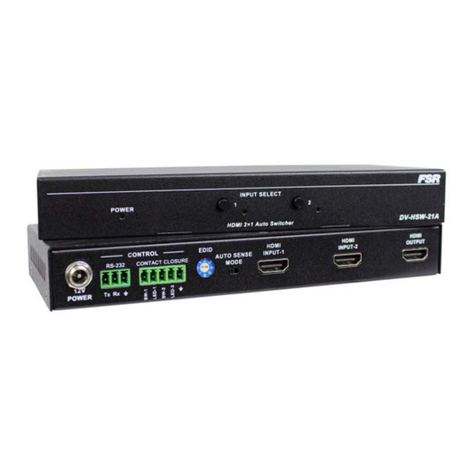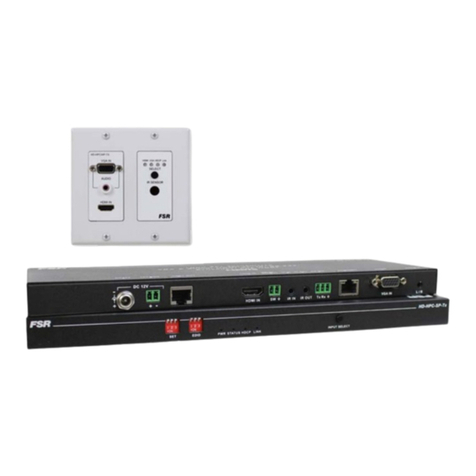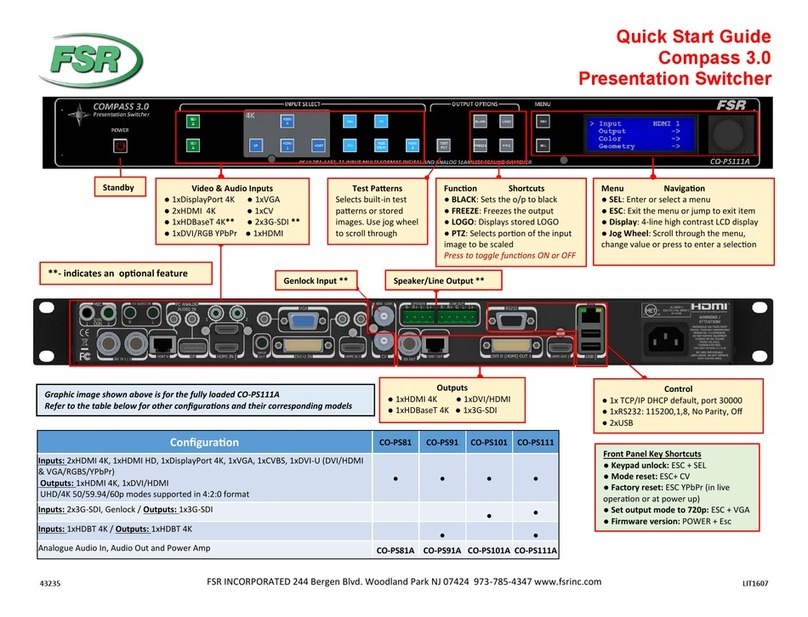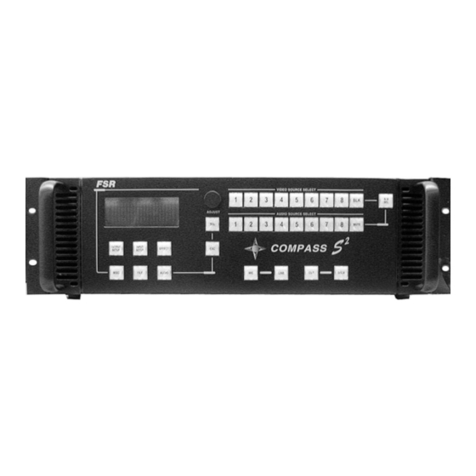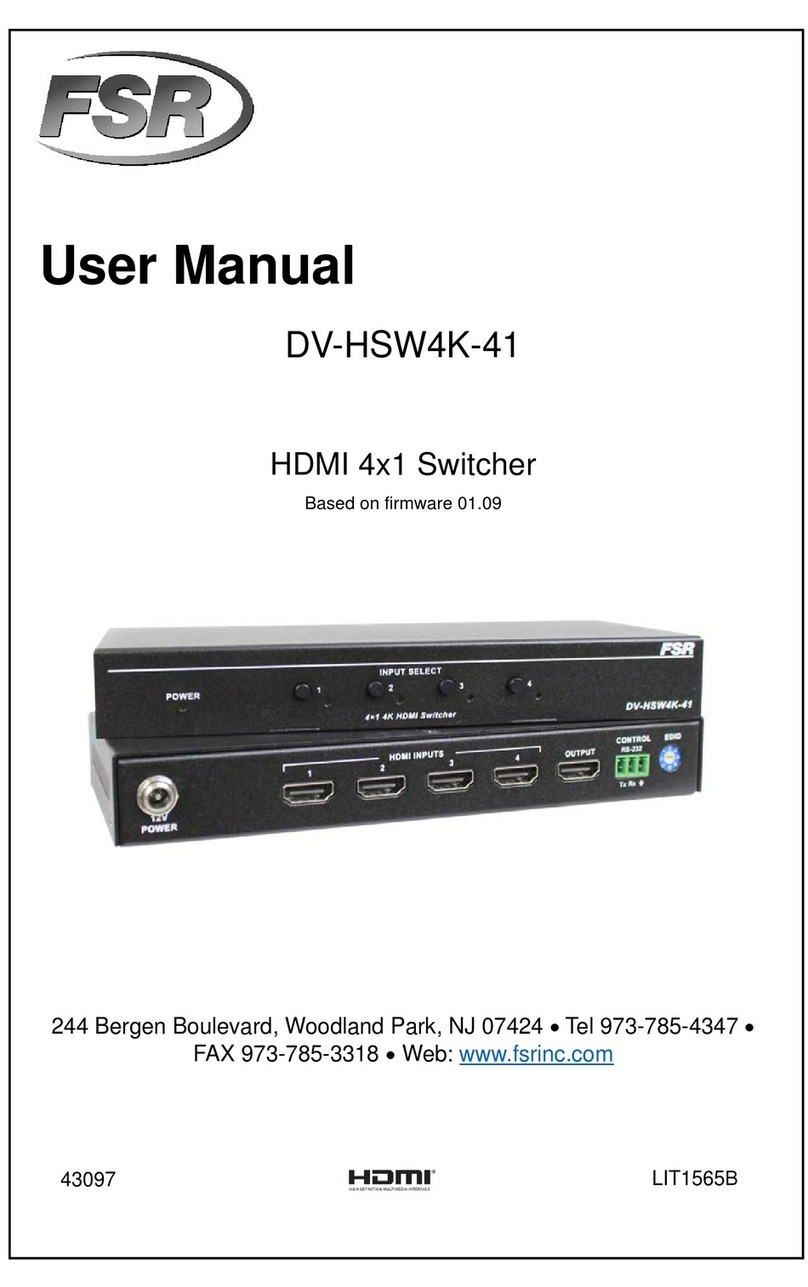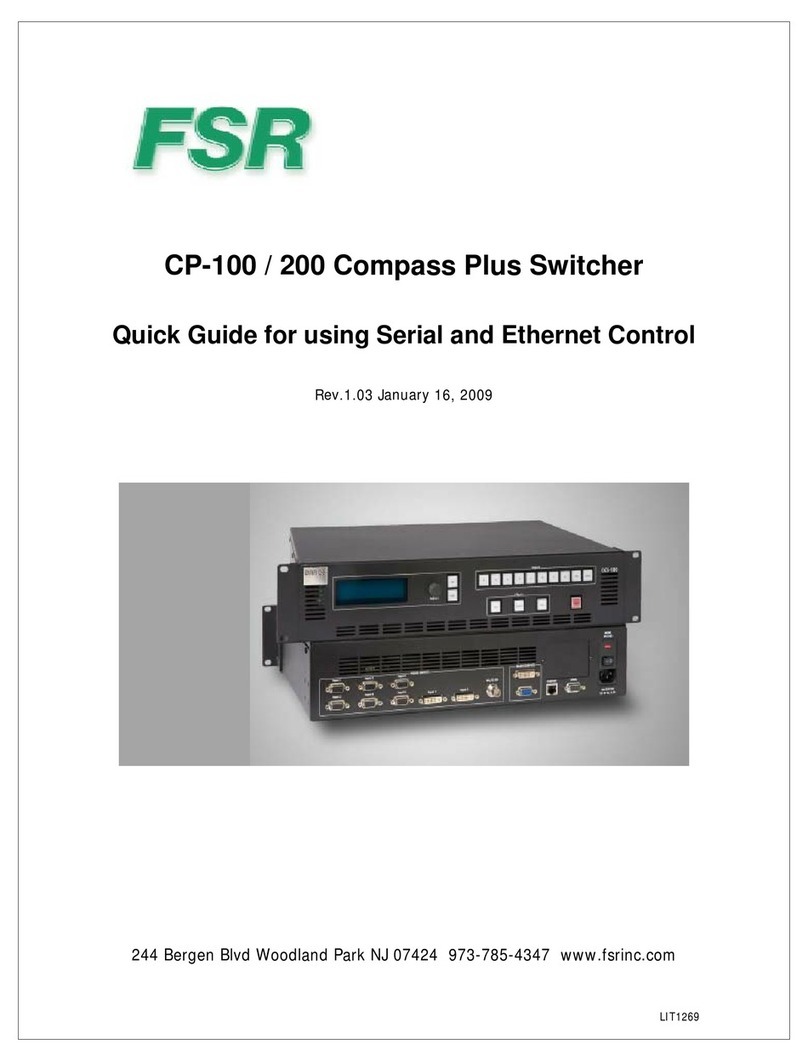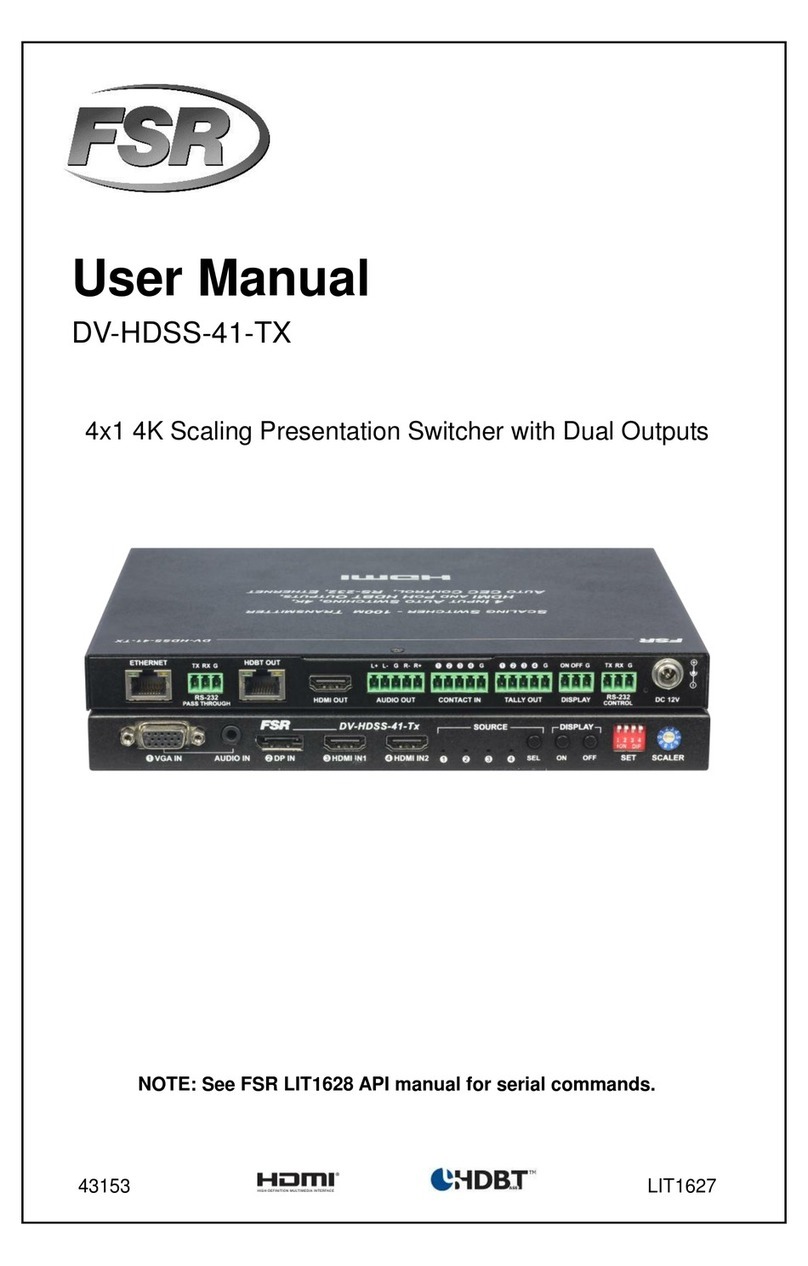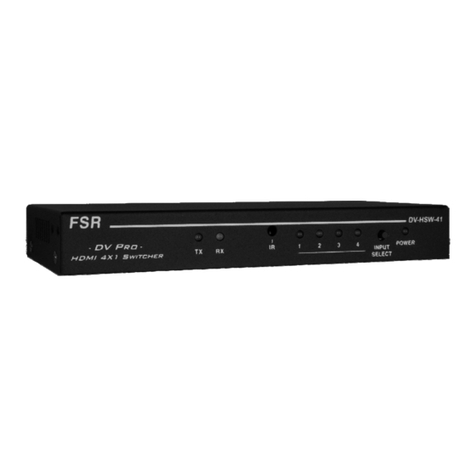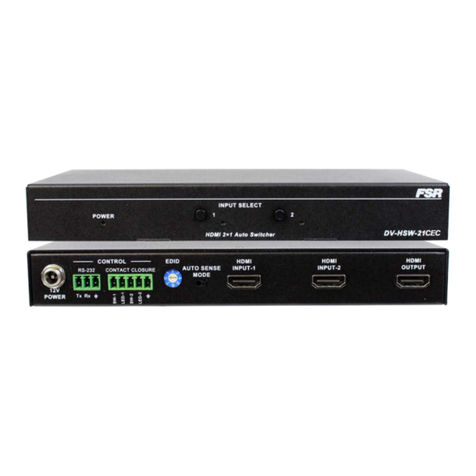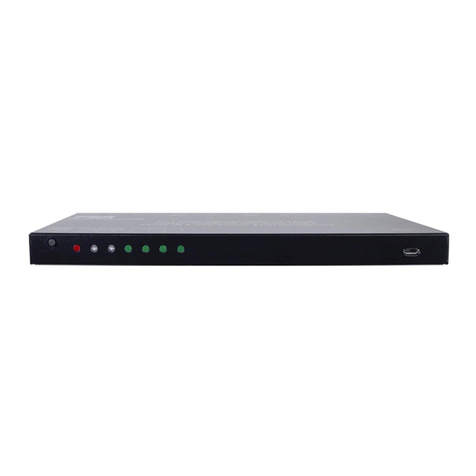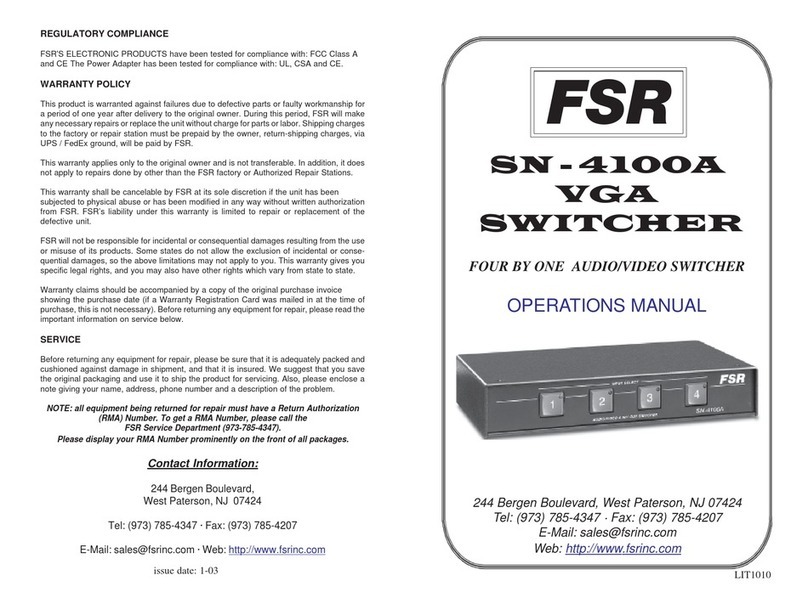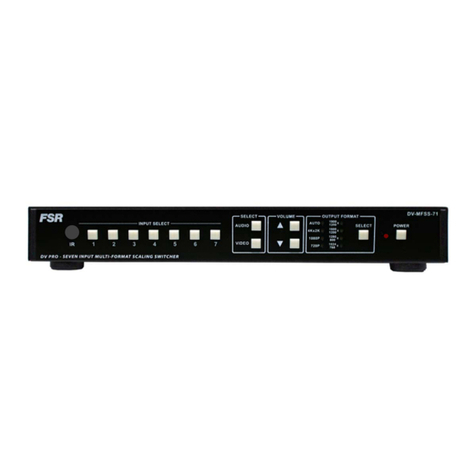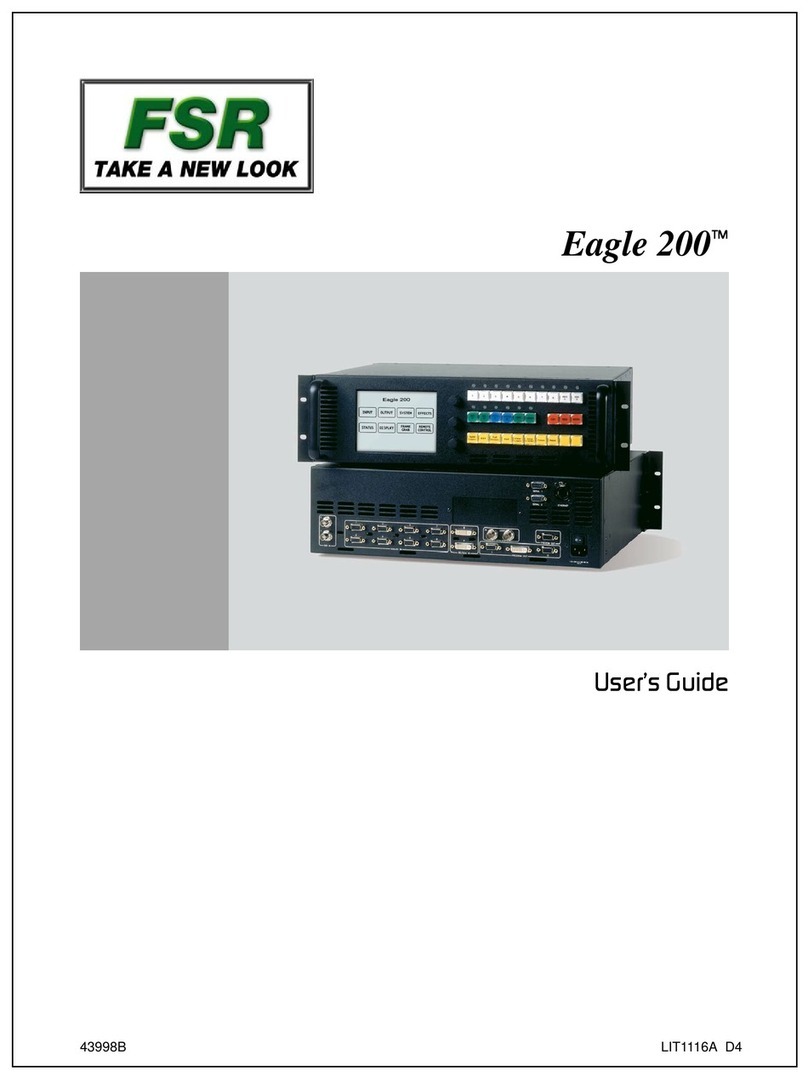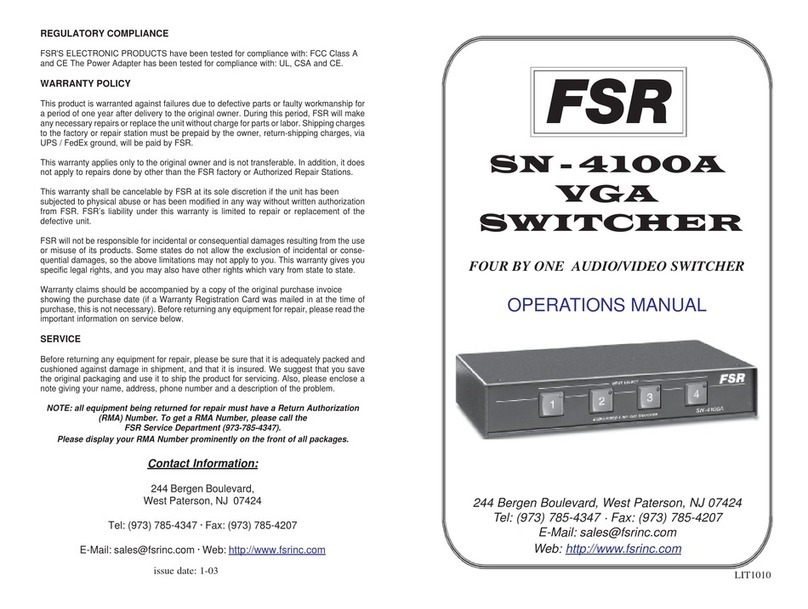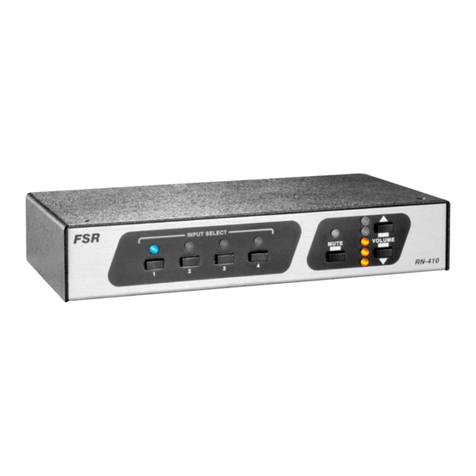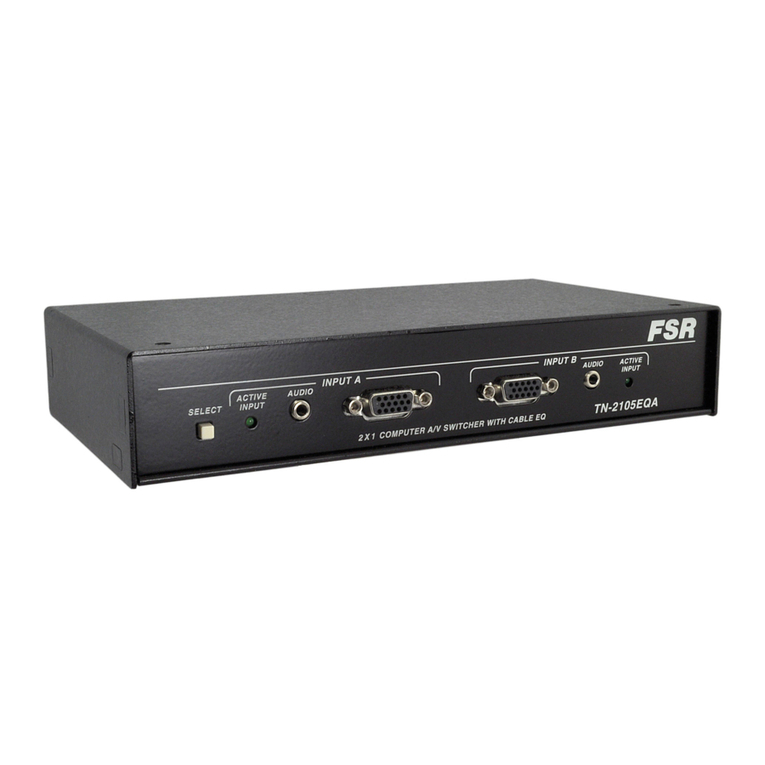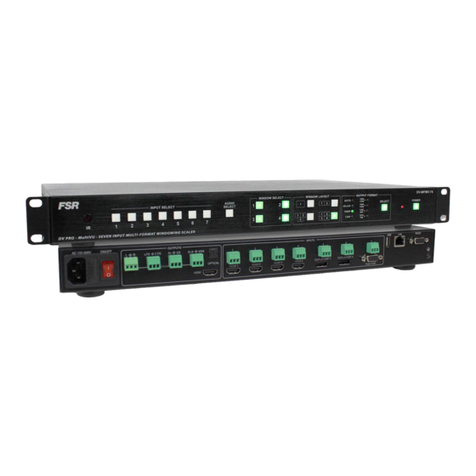
8CP-100 • User’s Guide
Table of Contents
Button States . . . . . . . . . . . . . . . . . . . . . . . . . . . . . . . . . . . . . . . . . . . . . . . . . 37
Quick Setup and Operations . . . . . . . . . . . . . . . . . . . . . . . . . . . . . . . . . . . . . 38
Menu Tree . . . . . . . . . . . . . . . . . . . . . . . . . . . . . . . . . . . . . . . . . . . . . . . . . . . 40
Using the Menu System . . . . . . . . . . . . . . . . . . . . . . . . . . . . . . . . . . . . . . . . . 41
Quick Function Reference . . . . . . . . . . . . . . . . . . . . . . . . . . . . . . . . . . . . . . . 43
Status Menu . . . . . . . . . . . . . . . . . . . . . . . . . . . . . . . . . . . . . . . . . . . . . . . . . . 46
Using the Setup Menu . . . . . . . . . . . . . . . . . . . . . . . . . . . . . . . . . . . . . . . . . . 48
Trans Time. . . . . . . . . . . . . . . . . . . . . . . . . . . . . . . . . . . . . . . . . . . . . . 49
Output Menu . . . . . . . . . . . . . . . . . . . . . . . . . . . . . . . . . . . . . . . . . . . . 49
Output Format. . . . . . . . . . . . . . . . . . . . . . . . . . . . . . . . . . . . 50
Test Pattern. . . . . . . . . . . . . . . . . . . . . . . . . . . . . . . . . . . . . . 50
Sync Setup . . . . . . . . . . . . . . . . . . . . . . . . . . . . . . . . . . . . . . 51
Gamma . . . . . . . . . . . . . . . . . . . . . . . . . . . . . . . . . . . . . . . . . 51
Save Output Config. . . . . . . . . . . . . . . . . . . . . . . . . . . . . . . . 51
Input Menu. . . . . . . . . . . . . . . . . . . . . . . . . . . . . . . . . . . . . . . . . . . . . . 52
Input Format . . . . . . . . . . . . . . . . . . . . . . . . . . . . . . . . . . . . . 53
Type . . . . . . . . . . . . . . . . . . . . . . . . . . . . . . . . . . . . . . . . . . . 54
Colorspace . . . . . . . . . . . . . . . . . . . . . . . . . . . . . . . . . . . . . . 54
Background. . . . . . . . . . . . . . . . . . . . . . . . . . . . . . . . . . . . . . 55
Timing Adjust. . . . . . . . . . . . . . . . . . . . . . . . . . . . . . . . . . . . . 55
Image Adjust . . . . . . . . . . . . . . . . . . . . . . . . . . . . . . . . . . . . . 58
Contrast. . . . . . . . . . . . . . . . . . . . . . . . . . . . . . . . . . . . . . . . . 60
Brightness . . . . . . . . . . . . . . . . . . . . . . . . . . . . . . . . . . . . . . . 60
Color Balance . . . . . . . . . . . . . . . . . . . . . . . . . . . . . . . . . . . . 60
Processing. . . . . . . . . . . . . . . . . . . . . . . . . . . . . . . . . . . . . . . 61
About Input Configuration Files. . . . . . . . . . . . . . . . . . . . . . . 62
Reset Config . . . . . . . . . . . . . . . . . . . . . . . . . . . . . . . . . . . . . 62
Save Config. . . . . . . . . . . . . . . . . . . . . . . . . . . . . . . . . . . . . . 63
Delete Config. . . . . . . . . . . . . . . . . . . . . . . . . . . . . . . . . . . . . 64
Recall Config. . . . . . . . . . . . . . . . . . . . . . . . . . . . . . . . . . . . . 65
Key Setup Menu . . . . . . . . . . . . . . . . . . . . . . . . . . . . . . . . . . . . . . . . . 66
LOGO Setup Menu . . . . . . . . . . . . . . . . . . . . . . . . . . . . . . . . . . . . . . . 67
User Preference Menu. . . . . . . . . . . . . . . . . . . . . . . . . . . . . . . . . . . . . 68
In Auto Acquire . . . . . . . . . . . . . . . . . . . . . . . . . . . . . . . . . . . 68
Auto Input Config. . . . . . . . . . . . . . . . . . . . . . . . . . . . . . . . . . 70
Auto Input Save. . . . . . . . . . . . . . . . . . . . . . . . . . . . . . . . . . . 70
Auto Take . . . . . . . . . . . . . . . . . . . . . . . . . . . . . . . . . . . . . . . 70
Black Auto Take . . . . . . . . . . . . . . . . . . . . . . . . . . . . . . . . . . 71
Key Auto Take. . . . . . . . . . . . . . . . . . . . . . . . . . . . . . . . . . . . 71
Menu Context . . . . . . . . . . . . . . . . . . . . . . . . . . . . . . . . . . . . 71
System Menu. . . . . . . . . . . . . . . . . . . . . . . . . . . . . . . . . . . . . . . . . . . . 71
VFD Brightness . . . . . . . . . . . . . . . . . . . . . . . . . . . . . . . . . . 72
Ethernet. . . . . . . . . . . . . . . . . . . . . . . . . . . . . . . . . . . . . . . . . 72
Serial Setup. . . . . . . . . . . . . . . . . . . . . . . . . . . . . . . . . . . . . . 74
EDID Setup . . . . . . . . . . . . . . . . . . . . . . . . . . . . . . . . . . . . . . 75
DVI Cable Equalization . . . . . . . . . . . . . . . . . . . . . . . . . . . . . 77
File Association. . . . . . . . . . . . . . . . . . . . . . . . . . . . . . . . . . . 77
Temperature . . . . . . . . . . . . . . . . . . . . . . . . . . . . . . . . . . . . . 78
Diagnostics . . . . . . . . . . . . . . . . . . . . . . . . . . . . . . . . . . . . . . 79
Save System State . . . . . . . . . . . . . . . . . . . . . . . . . . . . . . . . 79
Tech Support. . . . . . . . . . . . . . . . . . . . . . . . . . . . . . . . . . . . . . . . . . . . 80
Factory Reset . . . . . . . . . . . . . . . . . . . . . . . . . . . . . . . . . . . . . . . . . . . 80












